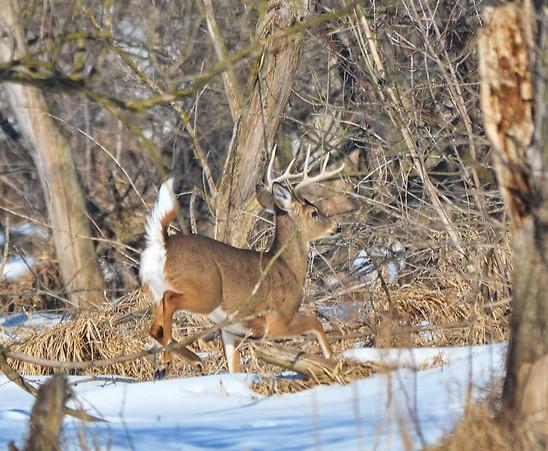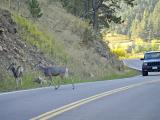The Minnesota Department of Natural Resources (DNR) confirmed that a wild buck harvested near Bemidji in November had chronic wasting disease (CWD), making the animal the first wild CWD detection in Beltrami County.
The adult male deer was found roughly 40 miles from a farm where CWD was found in deer carcasses illegally dumped in 2021. This is the first CWD detection in wild deer in Beltrami County, which is in north central Minnesota.
'Possible' connection to dump site
Michelle Carstensen, PhD, the wildlife health group leader at the Minnesota DNR, said the new case could be unrelated but explained that adult male deer often travel longer distances when rutting, and the animal may have been infected near the dumping site.
"Given the incubation period of CWD, it's possible," said Carstensen. She explained that since the 2021 incident, 1,800 samples have been collected around the site each year (and will be collected next year) in a 3-year effort to detect any other CWD cases.
CWD, a fatal prion disease, affects cervids like deer, elk, and moose in North America, Canada, Scandinavia, and South Korea. Detections—and surveillance—have increased in recent years, as some experts worry CWD could follow the lead of bovine spongiform encephalopathy ("mad cow" disease) and jump from animal to humans if infected tissues are consumed.
Cory Anderson, MPH, is part of the Chronic Wasting Disease (CWD) Response, Research, and Policy Program at the Center for Infectious Disease Research and Policy (CIDRAP) at the University of Minnesota. He said the detection in Beltrami County is not surprising.
"Unfortunately, once CWD shows up somewhere and becomes established, it's extremely difficult—if not impossible—to eliminate," he said. "Because of that reality, a lot of emphasis is placed on preventive measures that can help reduce the risk of it spreading to places that have yet to detect the disease. Nonetheless, its footprint continues to grow geographically."
Anderson explained that, in 2000, CWD was documented in 5 US states and 1 Canadian province. By 2010, it was confirmed in 17 states and 2 provinces. It has now been confirmed in at least 30 states and 4 provinces, with Alabama, Idaho, Louisiana, North Carolina, and Manitoba identifying cases of CWD for the first time since 2021.
CIDRAP publishes CIDRAP News.
More farm detections in Wisconsin, Texas
The Minnesota detection comes as deer farms in both Wisconsin and Texas report new cases of CWD.
A 5-year-old white-tailed buck at a deer farm in Lincoln County, Wisconsin, tested positive in mid-November, and the state has placed the farm under quarantine.
In Texas, CWD was detected on a high-fence release site in Kaufman County, the first detection in that county. According to the state, to date, 420 captive or free-ranging cervids—including white-tailed deer, mule deer, red deer, and elk—in 17 Texas counties have tested positive for CWD.
"Despite regulatory changes, we're continuing to see situations where CWD shows up in cervid farms," Anderson said. "At the end of the day, each new dot that's placed on the map represents additional risk for even further spread."




















